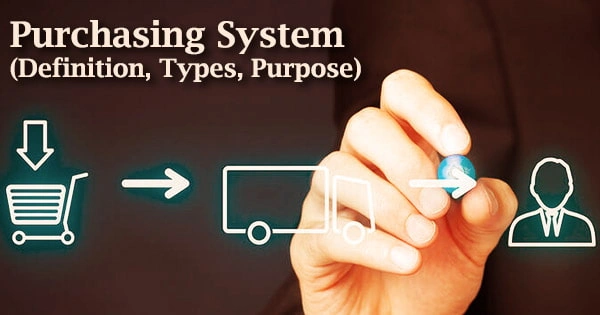A purchasing system is an inventory management component that can assist firms in monitoring and managing inventory. It is a method of purchasing goods and services that includes everything from request to purchase order to product delivery and payment. You can keep track of the goods and services you buy as well as your company’s total inventory levels with a purchasing system.
In order to determine what to buy, how much to buy, and when to buy it, purchasing systems are an important part of good inventory management. They monitor existing stock and assist organizations in determining what to buy, how much to buy, and when to buy it. It is a set of processes used to acquire goods and services for an organization. These processes include the following:
- Accept purchase requisitions from users
- Find and evaluate suppliers
- Negotiate prices
- Place purchase orders
- Monitor procurement cards
- Dispose of excess assets
Economic order quantity models may be used in purchasing systems. It can assist businesses in determining what inventory to buy, how much to buy, and when to acquire it. A purchasing system is a collection of processes that a corporation might employ to acquire products and services.
It is critical to maintain control over a company’s cash outflows so that just what is required is purchased and that purchases are done at fair pricing. Purchasing systems streamline the purchasing process and help businesses save money on supplies.
Computerized purchasing systems can minimize administrative expenses, shorten the procurement cycle, and eliminate human mistakes, resulting in fewer shortages. By swiftly providing expense reports, they can help ease order tracking and make it easier to manage purchasing budgets. Purchasing system software can help streamline the following:
- Placing purchase orders
- Managing orders and invoices
- Keeping a list of suppliers
- Forecasting future spending
- Finding purchase information (e.g., date of purchase and cost)
- Updating inventory stock levels
- Maintaining accurate records of purchases
The production planning system is an important input to a purchasing system since it can be used to automatically compute what needs to be purchased and when; it can also be used to automatically place replenishment orders with suppliers, entirely bypassing the traditional purchasing system.
Purchasing systems are critical for managing a company’s cash outflows. They make certain that only necessary purchases are made at acceptable pricing. Production planning system outputs are used by purchasing systems. Input amounts required in the manufacturing process are included in these outputs.
The sort of purchasing system you choose for your company is determined by the data you need to keep track of. Here are a few different types of purchasing systems to consider for your business:
- Stockless purchase system: Supplier holds items ordered by a customer until the customer needs them.
- Blanket order: Company places small orders on a day-to-day basis.
- E-purchasing: Purchasing system that allows you to buy and sell supplies, goods, and services over the internet.
- Rate contract method: System that helps a business establish parameters for purchasing goods and services.
- Capital equipment purchase: Purchasing system that requires high capital.
Depending on how your firm handles inventory and your industry, you may need a certain form of the purchasing system. If your company has to acquire things on a daily basis, for example, you may need to use a blanket order.
The economic order quantity (EOQ) model is used in inventory management to determine how many units a company should buy for its inventory with each batch order in order to lower total inventory expenditures. Holding and setup charges are included in the inventory costs.
Small enterprises might benefit from a variety of purchasing system advantages. For instance, purchasing systems may make the purchasing process for organizations considerably simpler and more efficient. Furthermore, purchasing systems can aid in the reduction of supply costs and the prevention of inventory loss.
An online purchasing system can assist save money by reducing prices, shortening the purchase cycle, and reducing human errors. Furthermore, purchasing system data can help you manage your inventory budget and predict what supplies you’ll need in the future.
Overall, purchasing systems can help you keep track of how much money your company spends on goods and services. Requisitioning is the first step in the Purchase-to-Pay system, which is followed by procurement and finally payment. It aims to improve the purchasing process, resulting in greater financial controls and efficiency for the company.
A purchasing system’s main drawback is that it adds bureaucracy to the purchasing process, slowing down the procurement of products and services. To get around this, department procurement cards are frequently used to purchase lower-cost things without having to deal with the purchasing department.
















